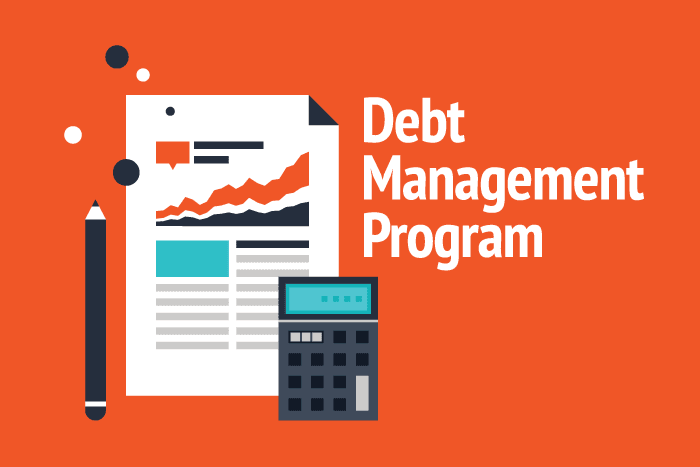Comprehending the Process of Debt Consolidation: More Discussion Posted Here
Comprehending the Process of Debt Consolidation: More Discussion Posted Here
Blog Article
The Comprehensive Overview to Developing and Executing a Reliable Debt Administration Plan for Sustainable Debt Alleviation

Assessing Your Debt Situation
When embarking on the journey to produce an efficient financial debt administration strategy, it is necessary to begin by completely analyzing your current financial debt circumstance. More Discussion Posted Here. This initial step is critical as it offers a clear understanding of the degree of your financial obligations, the rates of interest connected to each financial debt, and the minimum month-to-month payments needed. By putting together a detailed checklist of all your debts, consisting of bank card, fundings, and any kind of various other outstanding balances, you can acquire understanding right into the total quantity owed and prioritize which financial debts to tackle first
When assessing your financial obligation circumstance, it is essential to assess your income and expenses to determine just how much you can reasonably designate in the direction of financial debt settlement every month. This examination will certainly aid you create a budget plan that guarantees you can satisfy your financial debt obligations while still covering crucial living expenses. Additionally, by determining any kind of unnecessary costs that can be reduced or eliminated, you can liberate more funds to place in the direction of repaying your financial debts successfully.
Establishing a Budget Strategy
To efficiently manage your finances and achieve your financial debt settlement goals, it is crucial to establish a comprehensive budget plan. A budget plan works as a roadmap for your financial health, outlining your revenue, expenses, and savings goals. Start by calculating your overall regular monthly income after tax obligations. This includes your wage, any added income sources, and government benefits. Next, checklist all your dealt with expenses such as rent or mortgage, utilities, insurance coverage, and loan payments. Variable costs like groceries, entertainment, and transport must additionally be represented by estimating an ordinary regular monthly expense. Set apart in between wants and needs to focus on crucial expenses while identifying areas where you can cut back. Allocate a portion of your income in the direction of financial savings and a reserve to stay clear of gathering even more financial obligation in case of unexpected expenditures. Routinely review and readjust your spending plan as needed to remain on track towards achieving financial security and effectively managing your debt.
Discussing With Creditors
Engaging in conversations with creditors is a crucial action in proactively resolving and resolving exceptional financial obligation responsibilities. Start by collecting all pertinent details about your debts, including account details, exceptional balances, and rate of interest rates.
Throughout arrangements, be straightforward regarding your economic challenges and connect openly about your desire to helpful resources repay the financial obligation. Creditors are often happy to collaborate with people that demonstrate a real initiative to resolve their responsibilities. You can review prospective alternatives such as reorganizing the layaway plan, negotiating a lower rates of interest, or also working out the financial obligation for a reduced quantity.
Remember to record all interaction with lenders, consisting of arrangements gotten to, layaway plan established, or any kind of modifications to the terms of the financial obligation. By participating in positive discussions and reaching mutually useful contracts, you can lead the method towards sustainable debt alleviation and monetary stability.

Implementing Financial Debt Repayment Techniques
An important facet of taking care of financial debt effectively is the execution of well-balanced repayment techniques. When executing debt repayment approaches, it is necessary to start by prioritizing financial debts based upon elements such as rate of interest, superior equilibriums, and lender terms. One usual approach is the financial debt snowball technique, where you concentrate on paying off the smallest debts first while making minimal payments on larger debts - More Discussion Posted Here. This method can give a feeling of achievement as debts are repaid, encouraging you to proceed the process.
Another strategy is the debt avalanche technique, which involves prioritizing financial obligations with the highest possible passion prices to minimize the total passion paid over time. Checking your progression frequently and adjusting your strategies as needed will make certain that you are successfully managing your financial obligation and working in the direction of economic freedom.
Tracking and Changing Your Strategy
Consistently examining and fine-tuning your financial obligation management plan is critical for maintaining economic security and attaining your lasting objectives. Checking your plan involves tracking your progress, evaluating your budget plan routinely, and remaining upgraded on your impressive financial obligations. It is vital to monitor your plan to guarantee that you are view publisher site on track to fulfill your repayment objectives and make any essential changes as your economic scenario modifications.
One way to monitor your financial obligation management strategy is by routinely examining your budget plan and expenditures to determine locations where you can reduce expenses and allocate even more funds towards debt settlement. By tracking your spending behaviors and reassessing your spending plan occasionally, you can make enlightened decisions on how to maximize your financial obligation payment strategy.
Furthermore, monitoring your plan permits you to remain inspired and concentrated on your economic goals. Celebrate small victories along the road, such as paying off a bank card or lowering a substantial part of your debt. These milestones can maintain you encouraged and committed to staying with your financial debt management prepare for lasting financial debt alleviation.
Final Thought
To conclude, developing and implementing an efficient debt administration strategy requires a comprehensive analysis of your financial debt circumstance, the growth of a budget plan, negotiation with lenders, implementation of financial debt settlement techniques, and continual tracking and adjustment. By following these steps, people can achieve sustainable debt relief and take control of their economic future.
With careful preparation and strategic decision-making, crafting a thorough financial debt administration plan is not just achievable but additionally important for lasting financial debt relief.When embarking on the journey to create an effective financial debt monitoring plan, it is important to begin by completely examining your present financial obligation situation. When implementing financial debt settlement techniques, it is important to start by focusing on debts based on aspects such as interest rates, outstanding equilibriums, and creditor terms. One typical technique is the financial debt snowball technique, where you focus on paying off the tiniest debts first while making minimal repayments on larger debts. These landmarks can go to this site keep you motivated and dedicated to sticking to your debt administration strategy for lasting debt alleviation.
Report this page